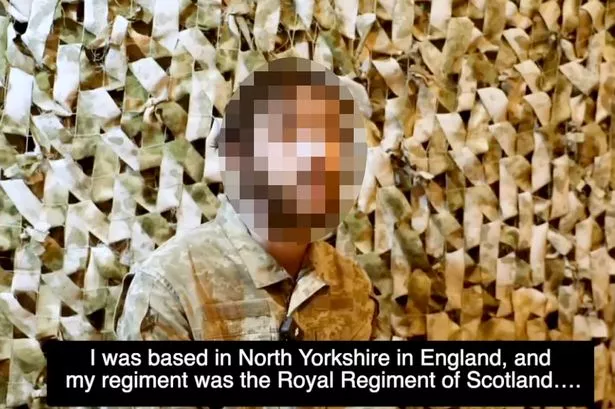Hayden William Davies, a 30-year-old British national, has resurfaced in a Russian propaganda video after previously being reported as killed in action in Ukraine. Davies, who had been fighting alongside Ukrainian forces, was captured by Russian troops. The video, disseminated by Russian state media, shows Davies seemingly in good health but clearly under duress, reading a prepared statement. While the exact circumstances of his capture remain unclear, the video’s release serves as a stark reminder of the human cost of the ongoing conflict and the propaganda tactics employed by both sides. Davies’ appearance raises concerns about his well-being and the potential for his exploitation as a pawn in the information war surrounding the conflict. His family, who had previously mourned his presumed death, now face the agonizing uncertainty surrounding his captivity and the conditions he is enduring.
The emergence of this video underscores the complexities of information dissemination within the context of war. Initial reports of Davies’ death, likely stemming from the chaotic and rapidly evolving battlefield situation, highlight the difficulties in verifying information in real-time. The subsequent release of the propaganda video, while confirming his survival, throws into sharp relief the manipulative nature of such material. The controlled environment, the scripted statements, and the implicit threat underlying Davies’ appearance all point to the calculated use of captured individuals for propaganda purposes. This incident further illustrates the challenges faced by journalists and the public in discerning truth from falsehood amidst the fog of war.
The use of captured soldiers in propaganda videos is a longstanding tactic employed in warfare, aimed at demoralizing the enemy, bolstering domestic support, and influencing international opinion. By showcasing captured personnel, the capturing force attempts to project an image of strength and dominance while simultaneously undermining the morale of the opposing side. The controlled narratives presented in such videos often aim to discredit the enemy’s cause, portray the captured soldiers as misguided or coerced, and justify the capturing force’s actions. In the case of Davies, the Russian propaganda machine likely intends to portray foreign fighters in Ukraine as mercenaries or adventurers, thus diminishing the legitimacy of international support for Ukraine.
Davies’ situation also highlights the precarious position of foreign fighters who have joined the Ukrainian forces. Motivated by various factors, including ideological convictions, a sense of duty, or a desire to defend democracy against aggression, these individuals have volunteered to fight alongside Ukrainian soldiers. However, their status as foreign nationals can complicate matters should they be captured. They may not be afforded the same protections as regular soldiers under the Geneva Conventions, and their governments may have limited leverage in negotiating their release. This precarious legal and political landscape makes foreign fighters particularly vulnerable to exploitation for propaganda purposes.
The impact of this video extends beyond the immediate concern for Davies’ well-being. It serves as a chilling reminder of the human cost of the war, transforming individual lives into pawns in a larger geopolitical game. For Davies’ family, the video brings a mixture of relief and renewed anguish, replacing the grief of presumed death with the agonizing uncertainty of captivity. The video also underscores the broader humanitarian crisis unfolding in Ukraine, with countless individuals caught in the crossfire, facing displacement, injury, and death.
The international community faces a difficult challenge in responding to such propaganda videos. Condemnation of the practice is essential, as is the continued insistence on adherence to international humanitarian law, including the humane treatment of prisoners of war. However, direct engagement with the capturing force regarding the release of individuals can be fraught with complexities, potentially legitimizing the propaganda effort or creating further opportunities for manipulation. Navigating this delicate balance requires a nuanced approach, prioritizing the welfare of captured individuals while simultaneously countering the disinformation campaign that seeks to exploit their plight. The case of Hayden William Davies serves as a stark reminder of the human dimension of this conflict and the urgent need for a peaceful resolution.














